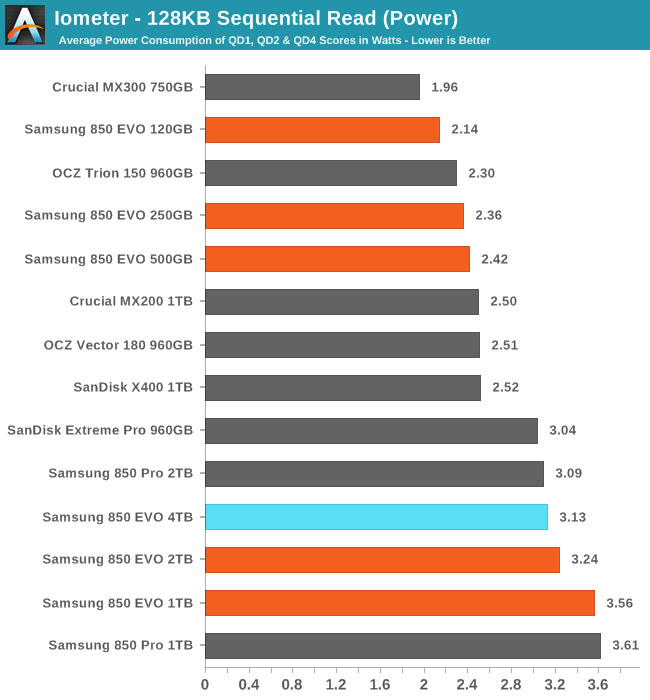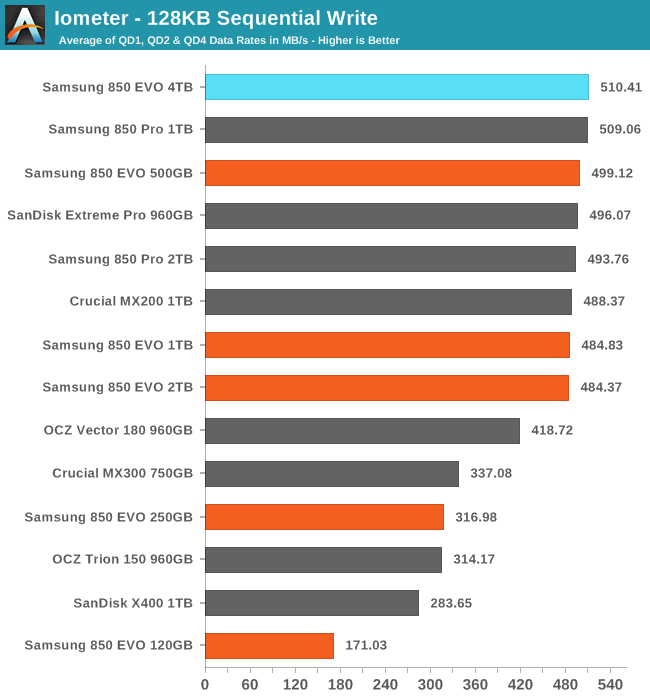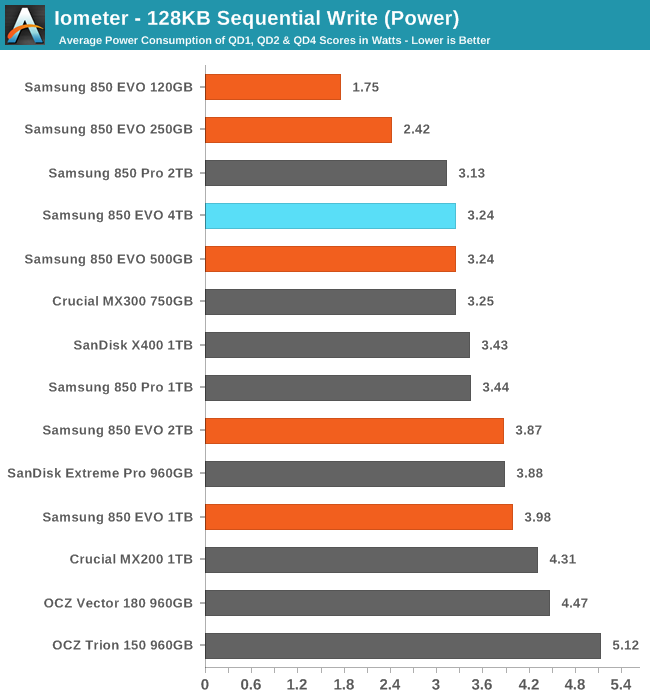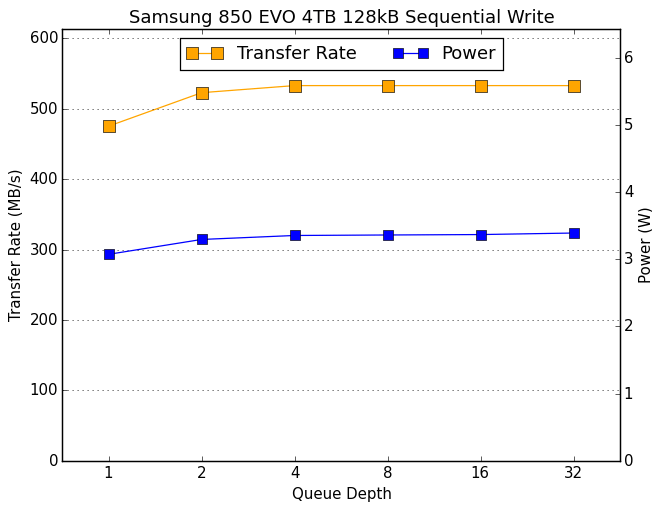The Samsung 850 EVO 4TB SSD Review
by Billy Tallis on July 11, 2016 10:00 AM ESTSequential Read Performance
The sequential read test requests 128kB blocks and tests queue depths ranging from 1 to 32. The queue depth is doubled every three minutes, for a total test duration of 18 minutes. The test spans the entire drive, and the drive is filled before the test begins. The primary score we report is an average of performances at queue depths 1, 2 and 4, as client usage typically consists mostly of low queue depth operations.

The 4TB 850 EVO scores slightly better than the 2TB for sequential reads, but it is still a hair slower than the fastest drives.

Samsung's large drives draw a lot of power during the sequential read test, but at least the 4TB 850 EVO improves over the 2TB and 1TB 850 EVOs.
 |
|||||||||
The 4TB 850 EVO does not suffer from the modestly impaired QD1 performance of the 2TB model, but for the rest of the test the 4TB is slightly slower than the other two.
Sequential Write Performance
The sequential write test writes 128kB blocks and tests queue depths ranging from 1 to 32. The queue depth is doubled every three minutes, for a total test duration of 18 minutes. The test spans the entire drive, and the drive is filled before the test begins. The primary score we report is an average of performances at queue depths 1, 2 and 4, as client usage typically consists mostly of low queue depth operations.

The 4TB 850 EVO manages to just barely break the record of the 1TB 850 Pro for the fastest sequential write speeds at low queue depths.

With the fastest performance and the fourth-lowest power usage, the 4TB comes out on top for efficiency.
 |
|||||||||
The 4TB 850 EVO shows substantially better QD1 performance and slightly better QD2 performance than the 2TB 850 EVO while having power consumption that is more in line with the 850 Pro.










145 Comments
View All Comments
Samus - Monday, July 11, 2016 - link
But you could buy 8TB of MLC-based Mushkin Reactor for the price of 4TB of 850 EVO. Then you consider a RAID of Reactors will be 4x the sequential performance of a 850 EVO.And let's face it, with a storage drive like a 4TB SSD, sequential performance is all that really matters unless you actually plan to use it as a boot/system drive.
ACE76 - Monday, July 11, 2016 - link
http://www.fudzilla.com/news/memory/39668-mushkin-...I can't wait for this...at $500 for 4tb, I'd move all my media over to SSDs in a RAID 10 array.
Ian Cutress - Tuesday, July 12, 2016 - link
We got clarification from Mushkin at the time when we posted similar: the $500 price point was actually a mischaracterization. The initial price would be much closer to $1000, with $500 being a goal nearer EOL.Oxford Guy - Monday, July 11, 2016 - link
How does TRIM fit into the picture of RAIDed ssds, though?Impulses - Tuesday, July 12, 2016 - link
TRIM has been working on RAID for a while, years actually, at least on Intel's newer chipsets... They kept it from older chipsets (like my old rig's P67) but enterprising users back ported it thru BIOS edits/hacks.Impulses - Tuesday, July 12, 2016 - link
Not that I'm against the EVOs, running 2x 1TB in RAID myself.bittermann - Monday, July 11, 2016 - link
Good luck fitting 4TB of data on that 1TB drive....Spoogie - Monday, July 11, 2016 - link
With Optane on the horizon, no reason to bite at this price point.Flunk - Monday, July 11, 2016 - link
I don't think it's the same market. Optane isn't going to be less than $1 a GB at the start.patrickjp93 - Monday, July 11, 2016 - link
65 cents/GB actually.